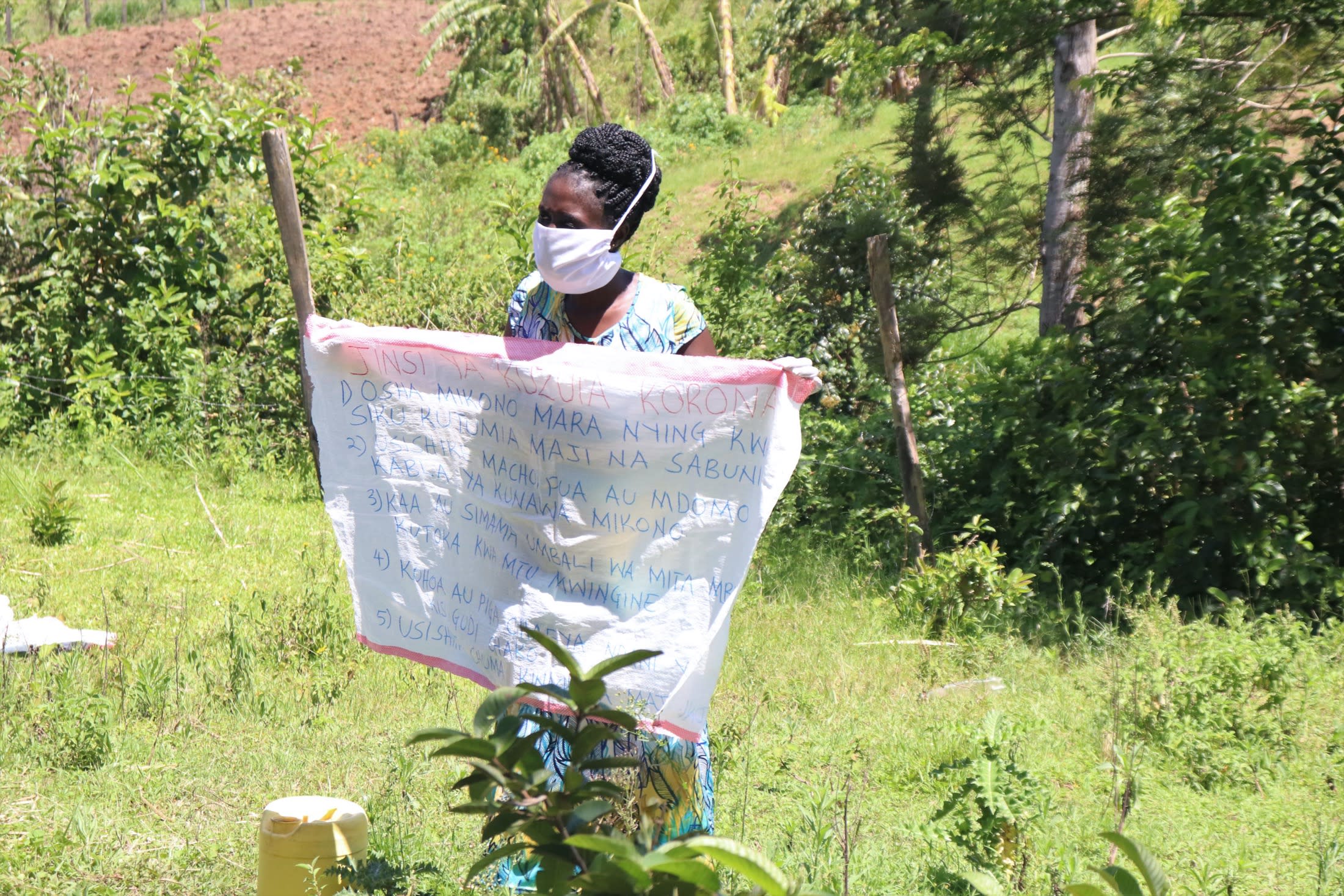Amwayi Spring is located in Isembe Village within Kakamega County. The people in the community are mainly farmers - sugarcane at a large scale for profit and food crops for eating or selling in the local market. The other source of income is casual labor jobs, mostly performed by the men and sometimes women in female-headed households.
A normal day for this community involves women waking up at 5am to prepare breakfast on school days and clean the compound.
This is also the time when they milk the cows and clean the shades. The men are also up at this time. Many go into town since they are either public transport drivers or motorbike operators.
The women, after seeing off the children to school, directly go to the farms before the sun gets too hot - an activity that goes on for almost four hours. The remaining part of the day is spent washing clothes, cooking lunch, and attending community, women, or church meetings.
The day is usually over at around 8pm, with a plate of dinner, if food is available. Then people retire to bed.
Poverty is the only hindrance to achieving things in this community, but if synergy is created between the beneficiaries, local government, and well-wishers, the lives of these people will change tremendously.
Development can easily be achieved and this starts with access to clean water and sanitation. That is paramount in having a healthy community.
Water
A teacher from a beneficiary school known as Mwangaza Secondary requested the organization staff to visit the spring and assess the situation.
The people of this community are in dire need of support in accessing clean and safe water and sound sanitation that will improve their lives.
The spring also serves a number of homesteads, all of whom require this basic need in order to live healthy lives and increase their productivity.
The traditional method of drawing water is usually used. The water is scooped using a small plastic container and poured into a bigger plastic jerrycan. Drinking water is stored in clay pots. The rest of the gathered water is stored in the same jerrycans until it is all used up. Then more is fetched.
The source is contaminated because it is an open source with no protection. Dirt flows into the source and channels of contamination are all open.
"I have lived in this community ever since I was a child, my parents home being just a stone throw away," Mrs. Catherine Alwang'a said.
"We have experienced a variety of health problems, and since conventional medicine is a bit expensive for most of us, we either live with the disease or resort to traditional medication, which has not been so effective."
A safe water shortage for this community is a "death sentence" on it own, as the people continuously suffer from waterborne diseases like typhoid and cholera. The children hardly attend school when they get ill and miss out on the lessons.
When the men and women are sick, the eldest child has to take care of them and the rest of the household. This means the parents cannot work and the child has to miss school.
"The children miss school when they fall sick, and production is low when the parents are sick, to a point where households go hungry. Since the kind of jobs we have can only cater for daily needs, we live, as the saying goes, from hand to mouth," Mrs. Alwang'a said.
Sanitation
More than half of the households in the community have latrines. The latrines that exist are dug holes in the ground.
The walls differ from one homestead to another, but the most common latrines are the ones covered by pieces of cloth. Some are thatched with no doors on them. Most are smelly and so small that one has to bend over while walking inside.
A majority of the people dispose their garbage behind their kitchen where there is a dug pit. Some just pour the garbage on a small section of their farms to compost.
Here’s what we’re going to do about it:
Training
Community members will attend hygiene and sanitation training for at least two days. This training will ensure participants have the knowledge they need about healthy practices and their importance. The facilitator plans to use PHAST (Participatory Hygiene and Sanitation Transformation), CLTS (Community-Led Total Sanitation), ABCD (Asset-Based Community Development), group discussions, handouts, and demonstrations at the spring. One of the most important topics we plan to cover is the handling, storage, and treatment of water. Having a clean water source will be extremely helpful, but it is useless if water gets contaminated by the time it’s consumed. Handwashing will also be a big topic.
Training will also result in the formation of a committee that will oversee operations and maintenance at the spring. They will enforce proper behavior around the spring and delegate tasks that will help preserve the site, such as building a fence and digging proper drainage. The fence will keep out destructive animals, and the drainage will keep the area’s mosquito population at a minimum.
Sanitation Platforms
On the final day of training, participants will select five families that should benefit from new latrine floors.
Training will also inform the community and selected families on what they need to contribute to make this project a success. They must mobilize locally available materials, such as bricks, clean sand, hardcore, and ballast. The five families chosen for sanitation platforms must prepare by sinking a pit for the sanitation platforms to be placed over. All community members must work together to make sure that accommodations and food are always provided for the work teams.
Spring Protection
Protecting the spring will ensure that the water is safe, adequate and secure. Construction will keep surface runoff and other contaminants out of the water. With the community’s high involvement in the process, there should be a good sense of responsibility and ownership for the new clean water source.
Fetching water is predominantly a female role, done by both women and young girls. Protecting the spring and offering training and support will, therefore, help empower the female members of the community by giving them more time and efforts to engage and invest in income-generating activities.

 Protected Spring
Protected Spring
 Rehabilitation Project
Rehabilitation Project










































